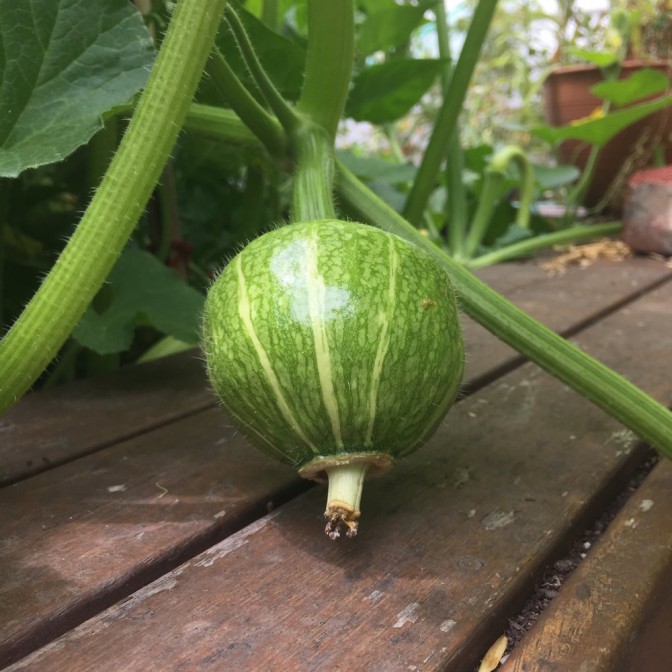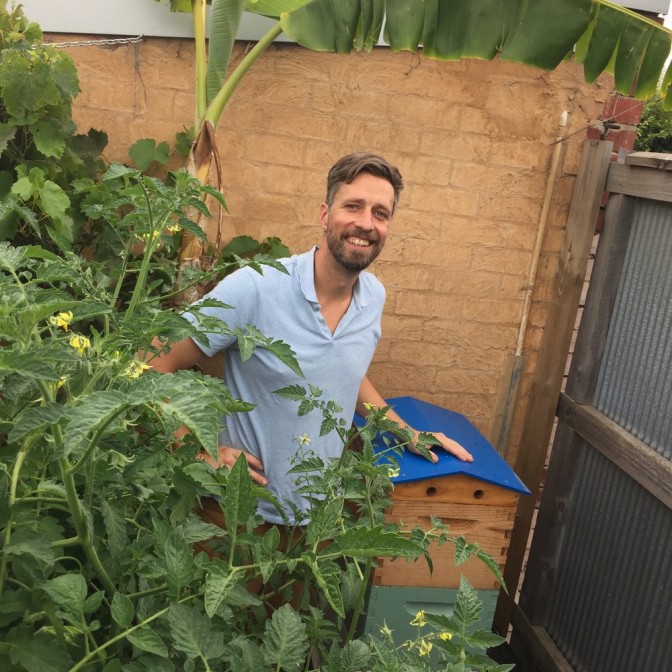Australia has a long and proud tradition of growing food in our cities and towns. As any keen gardener knows, it’s satisfying, healthy and relaxing. What’s more, nothing beats the flavour of your own fruit, veg, eggs, honey and (for the enthusiastic few) goat’s milk.
Beyond these individual motivations, there’s every reason to think that urban food growing is going to have an increasingly important role to play in our future food security. With the most recent data revealing 2016 as the hottest year on record, and with five out of the last twelve years setting new annual heat records, the need to create resilient cities and food systems that can withstand the impacts of climate change has never been more urgent.[1]
We’re talking about our future food security at the household and regional level: how are we going to ensure a stable and reliable supply of fresh and healthy food for present and future generations. The concerns are real. As our cities have grown through suburban sprawl, we’ve lost some of the country’s most fertile soils with secure access to high quality water and proximity to major markets. Recently the Melbourne University Foodprint Melbourne report found that 41 per cent of the city's food needs are still currently being met by nearby foodbowl areas such as Cardinia, Casey and Werribee. However this number could drop to 18 per cent by 2050 if urban expansion and population growth continue at the present rate. [2] Similarly the Sydney Food Futures team found that the Sydney foodbowl’s capacity to feed its residents could drop from meeting 20% of food demand today down to a mere 6% by 2050. [3]

We could continue to rely, as we have increasingly done for many years, on food imported from other countries. But in a time of growing uncertainty, will this be the wisest strategy? And apart from questions of vulnerability to supply chain disruptions, what about the fundamental values of food growing as an expression of place, culture, tradition and self-reliance?
Urban agriculture in all its diverse and creative forms is a great way for individuals and communities to start meeting these challenges. From private gardens to street verges, street planter boxes, community gardens, rooftops gardens and vertical walls, urban agriculture spans vegetable and fruit growing, livestock raising, beekeeping, aquaculture, hydroponics and aquaponics, and preserving.[4] It can take place on public and private land, as well as within institutions such as schools, aged care centres, universities and hospitals.
For householders, the benefits to individual and family health are well known, as is the sense of satisfaction and achievement that comes with even a small measure of self-sufficiency. There are also multiple community benefits, such as recycling organic waste reducing the heat island effect, and increasing water capture through greater urban green canopy covering. Urban food growing and related activities like food swapping re-establishes the connection between food and place, builds community through food and knowledge sharing, supports migrant communities to grow culturally appropriate foods, and creates a sense of local pride.[5]
With some commitment and an honest appraisal of available time and space, everyone has the ability to grow some of their own food and experience the benefits that comes with it. With this in mind, Sustain: The Australian Food Network caught up with Sebastian Beck from Melbourne’s Digger’s Club to get some insight into what new growers should consider around this time of year, and what methods and techniques can be utilised to ensure that the most is made of this period of abundance.

Q. What advice do you give to urban growers around managing the Melbourne weather at this time of year?
A. Usually one of the sunniest and hottest periods of the year, with the lowest rainfalls, we have to be smart to keep water levels up without wasting this scarce resource on the driest continent on earth.
Your plants should be fully established by this time of year and the roots are reaching down deep in search for water. Therefore you can start watering your garden less frequently but more deeply to reach (drinking-) root zones. It might help you consider the following:
When to water:
The ideal time to water established plants (in summer) is when the heat of the day has subsided. About two hours before sunset the warm soil warms the cold water before it reaches the root systems which avoids a shock to the plant. Water can be absorbed overnight and stored by the plant to minimize evaporation from drying winds and the hot sun during the day. Watering any later in the day bares the risk of fungal diseases springing from wet leaves that haven’t dried off before nightfall.
How much water:
If you water regularly and your soil accepts watering (i.e. soil is not hydrophobic) a shiny layer of water should disappear quickly into the soil when you first start watering. When you see that the water is sitting on top of the soil for a few seconds before soaking in, this is a good indication that the soil is well irrigated. But it really depends on the specific soil structure. The best method is to check the moisture content with your fingertips before and after watering to a depth of 5-10cm to get a feel for it. Eventually you will know intuitively when you have watered enough.
If the water just runs off but the soil stays bone dry just underneath the top layer, you should add compost/organic matter. Good soil comprises of 50% soil, 50% pore space (for 25% water and 25% air) and should feel like a sponge cake to the touch. The benefits of compost to soil cannot be overstated.
Compost can hold up to 6 times its own weight in water, which can cut the water needs of your garden in half.
Urban gardening is often done in containers to avoid the risk of being affected by soil contamination. Containers provide for lesser thermal mass and dry out quicker than ‘in ground’ gardens. In addition to adding compost to store water and mediate the temperature, you can add coco fibre, which is another excellent (and cheap) way of retaining water.
Tips:
- Water ‘slow and low’: Water the soil not the plant, Water like soft rain (not like storm water that just runs off)
- Watch the weather forecast and water before heat waves
- Water mature plants in late afternoon to minimize evaporation
- Take your time to observe your garden, soils and plants while you water
- Look at the plant and touch its leaves to determine if it is thirsty - dehydrated plant leaves feel warmer to the touch
- Disturb the soil surface with your fingertips to close channels that allow the soil to dry out
- Mulch with local available material
Q. With summer coming to an end and with gardens around Melbourne now filled with produce, how do you ensure the most is made from this period of abundance?
A. As home growers we have can choose from a great variety of heirloom vegetables for the best flavour and yield. We do not have to grow varieties which cater for months of storage in cool rooms or days of transport in shipping containers like conventional growers do. At the same time, we have to learn how to handle the harvest which often comes all at once, and does not come packed in cellophane and optimised for storage.
As we rediscover organic gardening (as practiced long before the industrialisation of food production) as the method of choice for urban gardening, we should also considerbringing back the knowledge of how our ancestors preserved foods without the help of chemicals and cold storage.
As a German I love pickles and sauerkraut. I’m not talking about the ‘lactic acid fermented’ versions you have to make at home with a salt brine and a bit of time. All fruits and vegetables can be preserved in one way or another, it’s just about learning and experimenting until you find your favourite. The only risk you face is that you will one day stand in a supermarket aisle and nothing will look appealing anymore! (For Sebastian’s pickle recipe visit http://www.uaf.org.au/sebs-pickles).
Q. With the weather set to become more unpredictable into the future, what methods do you use to safeguard the health of your plants and soil all year round?
A. Ever-changing weather patterns make it harder and harder to do gardening ‘by the book’. For example, this year (in Victoria at least) you probably will have noticed that everything took a bit longer than expected to get going, due to a late start to summer and an unusually cool and wet spring.
Whilst you can grow crops all year around in Melbourne's climate it is advisable to use one of these growing periods to put you soil to rest and rejuvenate it’s growing capabilities with a ‘green manure crop’. That way you give back to your planter box/garden what you have taken out of it in form of vegetables.
‘Green manures’ are plants grown and dug into the soil in order to fix nitrogen from the atmosphere, add organic matter and structure the soil. Using this ancient technique, we don’t deplete other habitats of their resources and keep things in a sustainable cycle.
This month, I will have to make a call as to whether I still have the time to grow a summer green manure crop or if I start an early winter green manure instead (such as oats or fava beans). The same scenario applies if you are planning a summer succession planting of fast growing greens before getting onto your winter veggies.
Sebastian will be hosting a free urban food-growing workshop at the Carlton Neighbourhood Learning Centre as part of Sustain’s 2017 Urban Agriculture Series on February 25th, to register see here. For more resources relating to all things home growing, please visit http://www.uaf.org.au/sebs-workshops.
To learn more about The Diggers Club and the Carlton Neighbourhood Learning Centre (CNLC) you can go to http://cnlc.org.au / https://www.diggers.com.au.
Sponsored by RACV.
